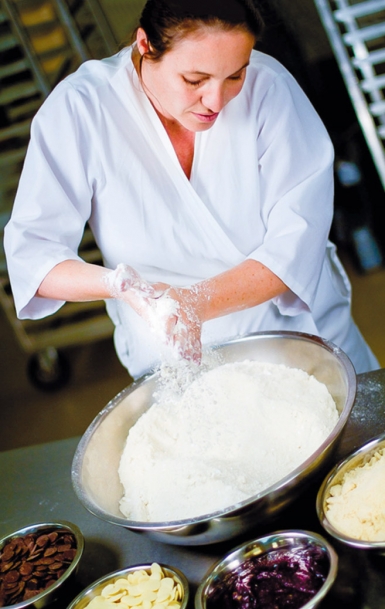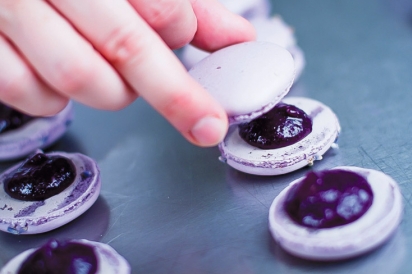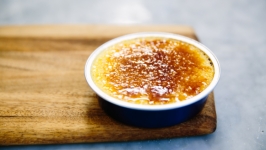Macarons: Flavors of Paris
You could say that macarons changed Claire and Bernard Becker’s life. When the couple moved to Los Angeles from Paris, it was with a sense of adventure. The couple wanted to explore a new culture, a new language, new places. What they didn’t count on was the trouble they’d have satisfying Bernard’s cravings for the airy French meringue sandwich cookies with creamy fillings.
“In Paris, he was buying one macaron a day,” says Claire.
“Macarons gerbet, or filled macarons, are distinctly Parisian,” writes David Lebovitz, a pastry chef and cookbook author, on his blog about living in Paris. Makes sense, then, that in L.A., the only macarons they could find that tasted like those from home were a far drive.
So Bernard asked Claire if she could make them.
As a painting conservationist in Paris who repaired museum paintings, Claire understood that the devil is in the details. She put her home-baking skills to work learning the nuances of the cookies with a reputation for being tricky.
Turns out, Claire is a macaron whisperer.
In 2011, Duverger was born in L.A. and soon moved to Oxnard. Today, the company makes about 20,000 all-natural, gluten-free macarons daily, sold primarily through wholesale channels. There are 20 flavors, plus a few seasonal varieties. (Apple pie and pumpkin debut this fall.) They feature traditional French flavors like salted caramel, pistachio and vanilla, and have expanded the line to include American favorites, like peanut butter and jelly, and red velvet. “It’s a French cookie that uses different flavors to cross cultures,” she says.
These days, Claire develops the new flavors, manages the company and collaborates with Pastry Chef Duane Copeland. Bernard, formerly a composer, now runs the business with his wife. The couple live in Ojai.
From the start, they have used only natural ingredients. “It’s what we believe in. It’s what we want to give to our kids,” says Claire, mother of four.
“We buy real ingredients, as if we are someone in our own kitchen,” she adds, explaining that they make their own pistachio paste and buy fresh local raspberries for the fillings, for example. Vanilla comes from beans, not extract, and the honey is from Ventura County.
They source organic products as much as possible. The scarcity of organic almond flour used for the shells keeps them from pursuing organic certification.
They also use natural colors, which are difficult to find and to work with, she says. “Colors are very sensitive to the heat and you need to reach a certain temperature to bake the shells. The color just fades and becomes gray, all of them. We found a way to do it.”
As I toured the kitchen with Claire, chocolate perfuming the air, a flat of eggs waited to be cracked for the meringue. An employee not far away pulled a whisk filled with clouds of whipped egg whites, ready to be hand-mixed with the sugar and almond flour, from the bowl of a Hobart mixer that stands about five feet tall.
“You see differences between the eggs in winter and summer,” she says. So the shell recipe needs to be adjusted constantly to keep the results consistent.
Shells sat in checkerboard-straight alignment as an employee hand-piped filling onto the bases. The fillings are made from buttercream, ganache, mousse, almond paste or ganache montée (lighter than the standard ganache) to match each macaron’s flavor, Claire tells me.
It was all I could do to keep from grabbing a finished cookie from the workstation. They wouldn’t notice one missing, right?
After the tour, I bit into a black sesame macaron, promising myself I’d only have one bite. That didn’t happen. It was just too good.
You can find the cookies at Pavilions in Thousand Oaks, and Ojai’s Marché Gourmet Delicatessen and Westridge Market. The company plans to expand distribution in Ventura County. They are also adding a line of gluten-free tartlets.
—Sarene Wallace
For more info, visit DuvergerMacarons.com







